When we thought about India, we imagined busy cities and lots of people. Never did we expect that a trip to India would take us to a region with stunning nature, hundreds of monasteries and mountains that seem to touch the sky. That was because we didn’t knew about Ladakh yet. This region in the North of India was definitely one of the highlights of our trip to India. If you are in for an adventurous trip amidst the wonderful Himalayan mountains, make sure to visit Ladakh!
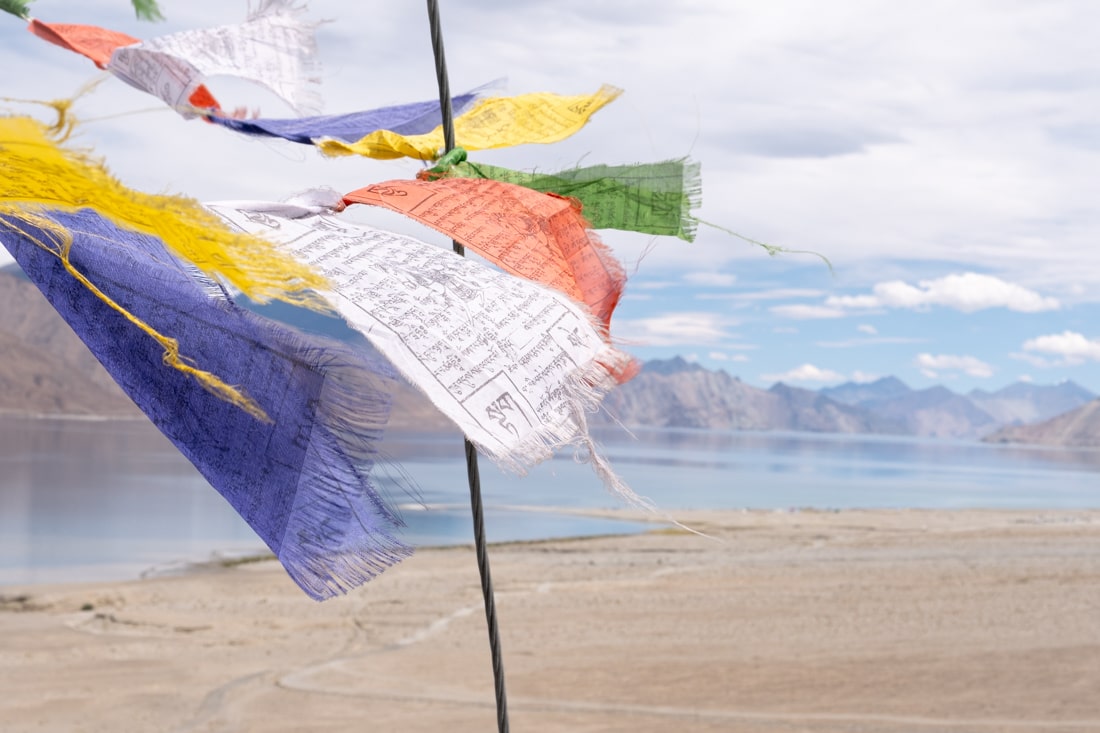
In this post, we’ll take you along our 8-day tour through Ladakh. This will give you a good impression of the must-sees in this region. You’ll also find our tips and advice for a visit to this region, including tips on how to avoid altitude sickness.
Some of the links on this blog are affiliate links. This means if you click on a link and purchase, we receive a small commission at no additional cost to you. The affiliate links concern only products and services we appreciated highly and trust. This means the views and opinions expressed in this post are purely our own. For more information, read our privacy and cookie policy.
Table of Contents
What tour to choose in Ladakh?
When choosing a specific tour company in Ladakh, there are several considerations you should take into account. That way, you will be able to choose the ideal company for your needs and wants when visiting Ladakh in India.
Group or private tour
One of the first decisions you will have to make is whether you will opt for a group tour or a private tour. A group tour will most likely consist of a group of 8 to 12 people, who travel together through this region. If you opt for a private tour, a chauffeur or guide is dedicated to you and your travel company. Both options have their advantages and disadvantages. The group tour is by far the most budgetfriendly. In a private tour, you have more flexibility, for example to stop along the way to take in the beautiful surroundings.
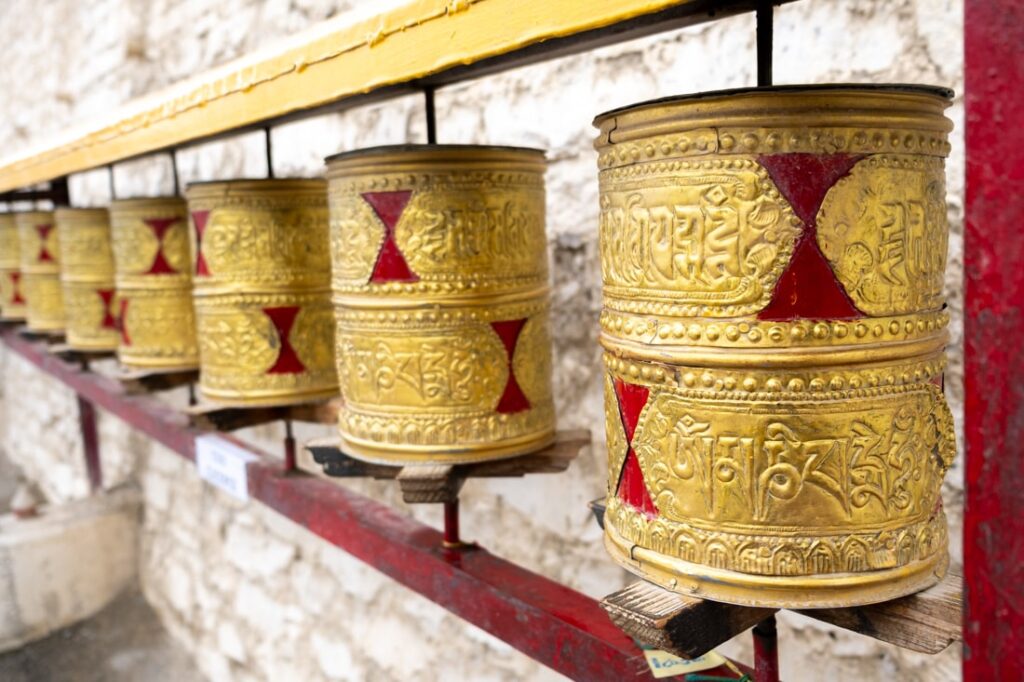
Your budget
The amount of money you are willing to spend on this trip will of course also influence the tour company. However, during our research, we did notice that most tour companies offer different options in pricing. The following variables have an impact on the price of a tour:
- Whether it is a private tour versus a group tour (see above)
- The total of days you’ll spend in Ladakh
- The sights you want to see. Most of the tours offer standard packages but prices can go up if you like to add specific sights. For example, including Tso Moriro in your itinerary will make your tour more expensive as this lake is very remote and adds a lot of kilometers to your journey
- The type of accommodation you are choosing. Most tour companies will give you the choice between a range of basic accommodation versus deluxe accommodation. Of course, deluxe accommodation will increase the price of your tour.
Duration of the tour
Most tour companies offer different tour packages, ranging from 4 till 15 day tours. Make sure you adjust the amount of days in Ladakh to your likings. Longer tours will most likely combine cultural sightings with more adventurous activities. We would recommend to choose a tour that also foresees a resting day, so you are able to adjust to the high altitude in this region.
Type of activities
The best type of tour will also depend on the type of activities you want to do in Ladakh. If you want to hike in the Himalayan mountains, make sure to look for a tour company that has expertise with high-altitude trekking. Another popular activity in Ladakh is to explore this region with a motorbike. There are plenty of tour companies who offer tours for that. Looking for a more relaxed way to discover the region? A road trip by car is highly recommended by us and it is easy to find tour companies that offer this.
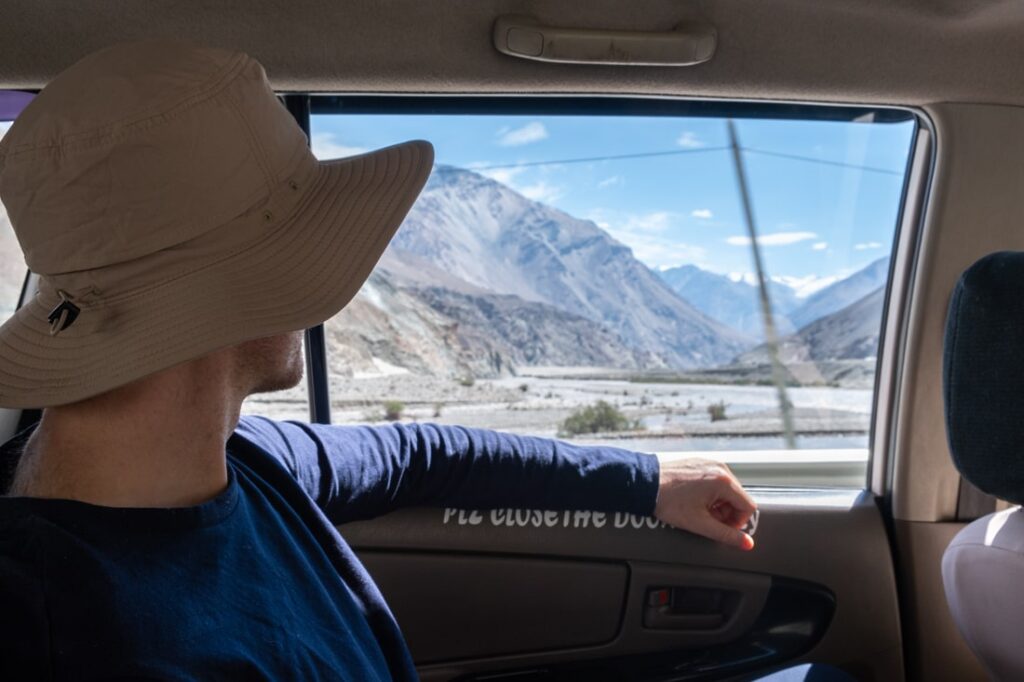
What tour did we choose?
We opted for an 8-day tour. This option would give us some time to acclimate to the high altitude, assuring us we could enjoy our tour to the fullest. The travel itinerary was as follows:
- Day 1 – Arrival in Leh, acclimate
- Day 2 – From Leh to Lamayuru
- Day 3 – From Lamayuru back to Leh
- Day 4 – From Leh to Nubra Valley
- Day 5 – From Nubra valley to Turtuk and back
- Day 6 – From Nubra valley to Pangong Lake
- Day 7 – From Pangong Lake back to Leh
- Day 8 – Departure from Leh
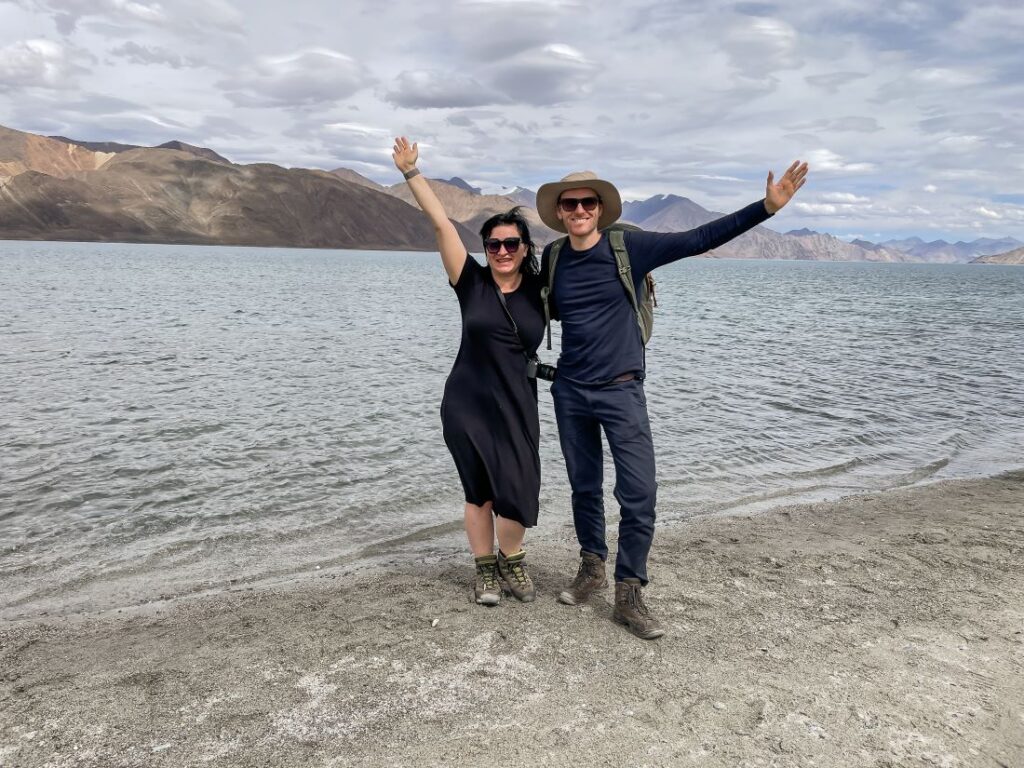
We were first in doubt to include Tso Moriri to our travel itinerary. We decided not to, because this like is out of way and would add a lot of driving kilometers, meaning we had less time to visit the other sightings along the way.
For our tour, we paid 39.000 INR per person and an extra 1.000 INR per person for the permit. This price included everything except lunch and the entrance fee to the attractions.
We chose the standard accommodation and after a filthy room in Delhi, we were prepared for the worst. But they were worries for nothing. Every hotel we stayed at in Ladakh was clean and comfortable. The staff was attentive and the food was always delicious.
Looking for a tour in Ladakh? Compare and book your tour in all safety!
Join us on our tour through Ladakh – Watch our video!
The must-sees in Ladakh
Leh, the capital of Ladakh
Leh is most likely the place where you arrive in Ladakh and where all tours start. The easiest way to get to Leh is by plane. First of all, landing in between the Himalayan mountains was one of the most beautiful and exciting landings we ever had. Leh sits at 3.500 meters above sea level, and as soon you leave the plane, you’ll notice you are in high-altitude region. The air is more thin and it is more difficult to breath. That is why it is important to take plenty of rest when you arrive in Leh.
Book your flight from Delhi to Leh
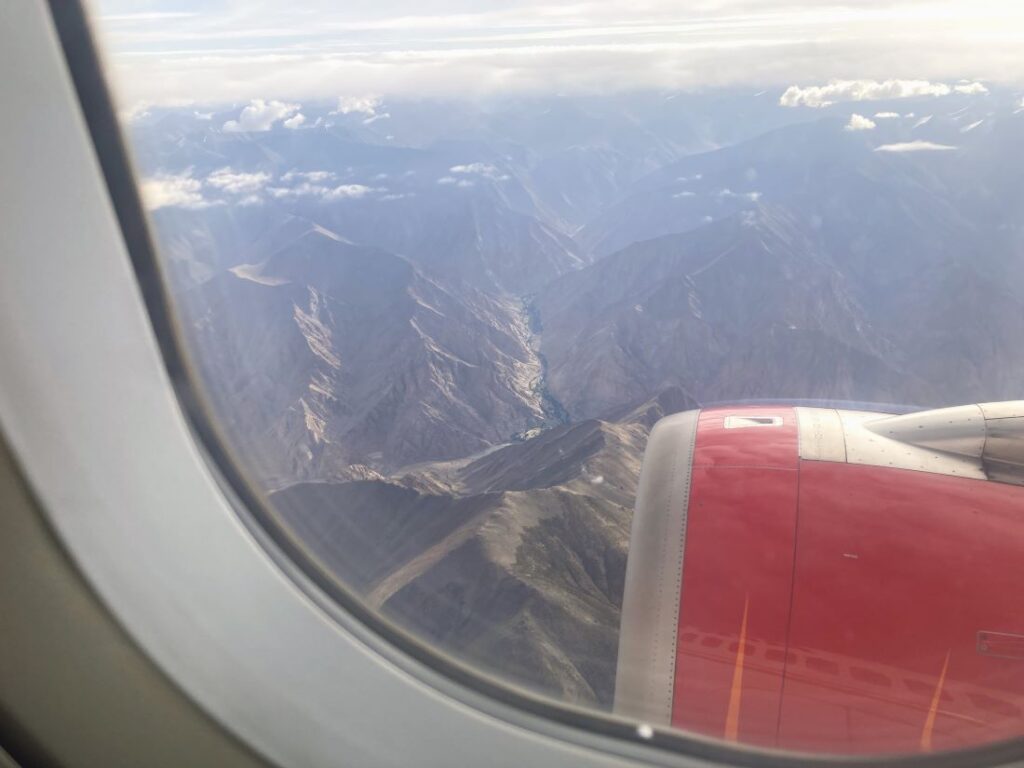
Make sure to let your body adjust to the high altitude before you start exploring the town and the region. Most companies come back to Leh at certain moments during the tour, so this will allow you to visit the most important attractions in Leh. Below, we’ll give you a quick overview of the things you shouldn’t miss in Leh
Leh Palace – Step back in time at Leh Palace. This 9-story palace was built in the 17th century and used to be the palace of ancient royal families. Why you definitely need to visit this palace are the views from the rooftop: You can see the entire town stretched out below, with some mountain peaks on the horizon.
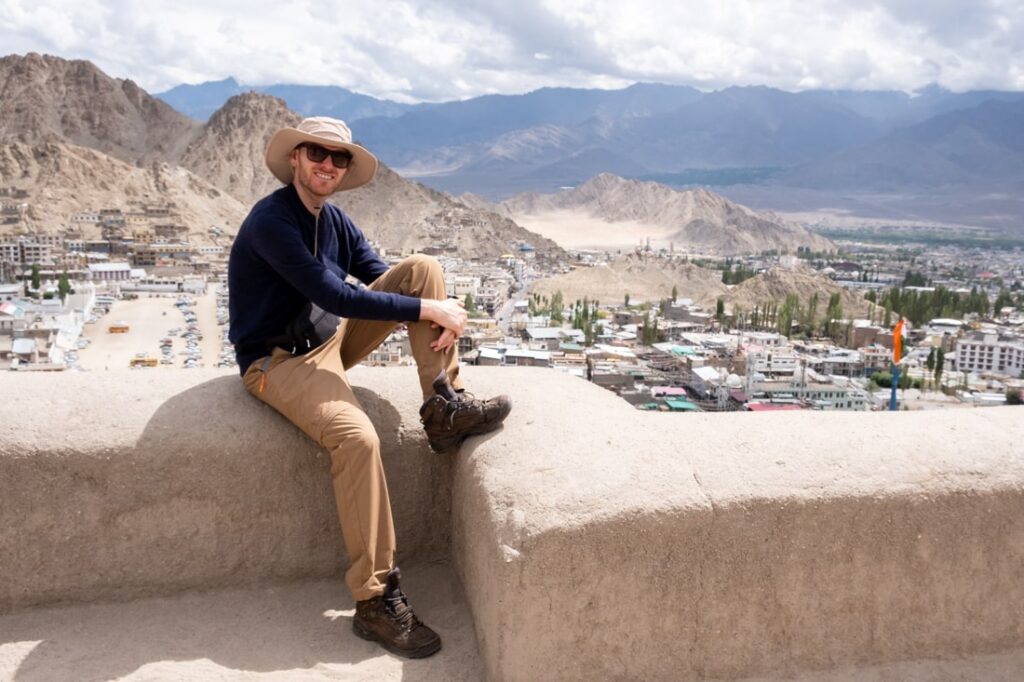
Leh Market – This is a bustling bazaar in the center of Leh. The market is full with little treasures like Tibetan jewelry, handicrafts or handmade pashmina shawls. It’s the perfect spot to pick up some souvenirs. By the way, bargaining here is a must, but always do it with a smile. It’s part of the experience, and we found out the vendors are really friendly.
The Hall of Fame – The Hall of Fame is a museum dedicated to the Indian Army. According to us, it is a must-see if you want to understand the military presence in Ladakh. The museum showcases different army and gear used by the soldiers to protect this region.
Shanti Stupa – This white stupa was built by Japanese Buddhists in the 1990s and sits on a hilltop overlooking Leh and the surrounding valleys. We arrived at the stupa in the afternoon, but let us tell you a secret: the sunrise at Shanti Stupa is said to be stunning. There is probably no better way to wake up than watching the sun come up at Shanti stupa while sipping from some hot chai. Sometimes, slowing down and simply soaking in the view is the best way to experience a place.
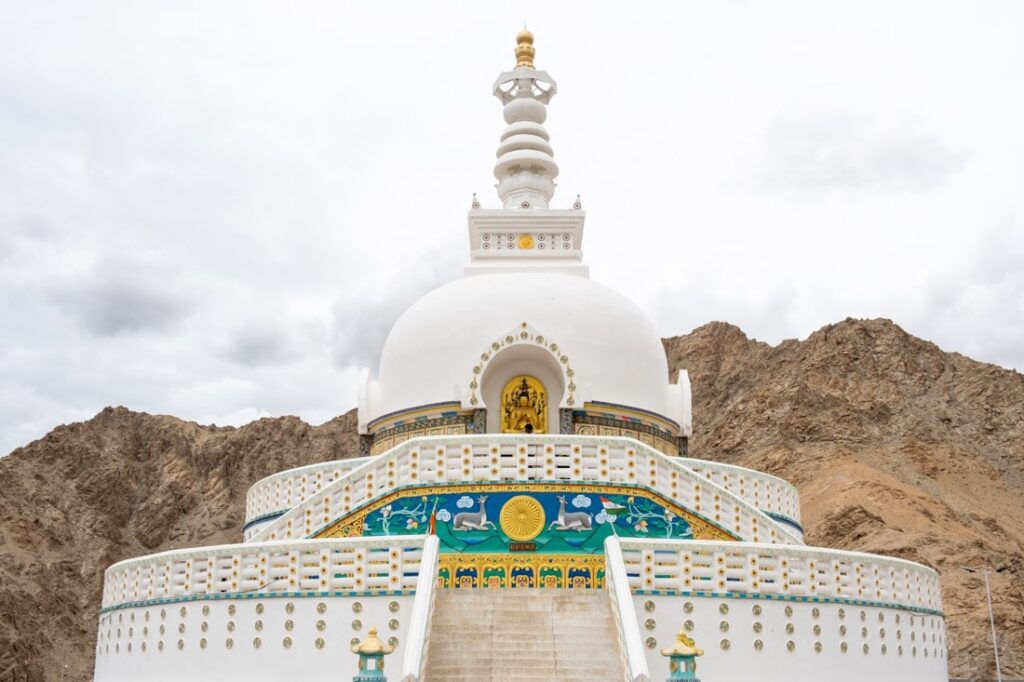
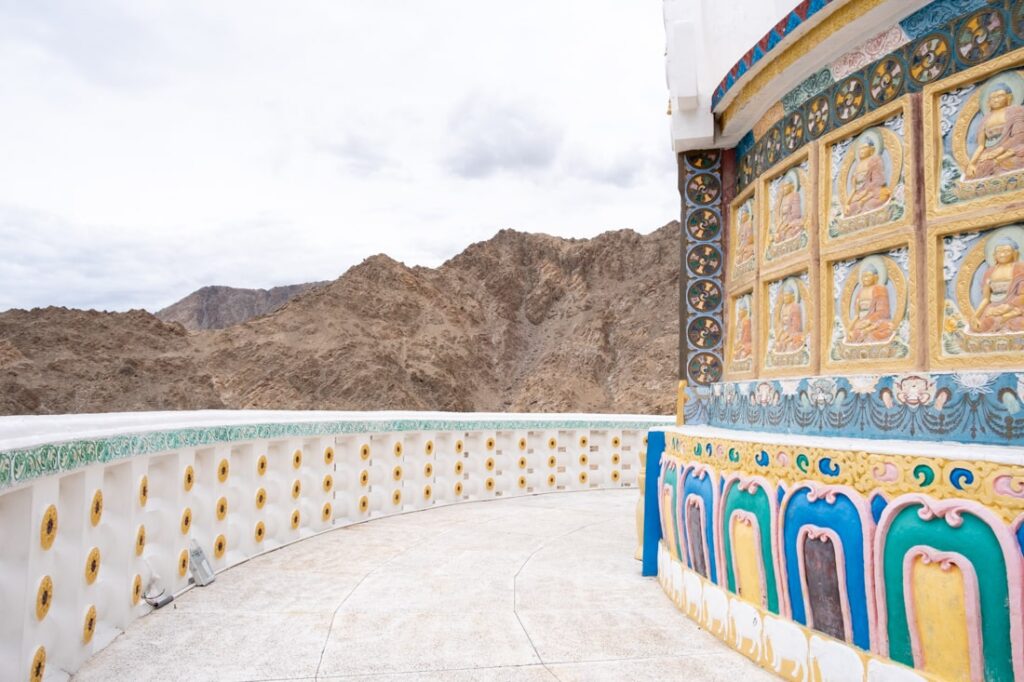
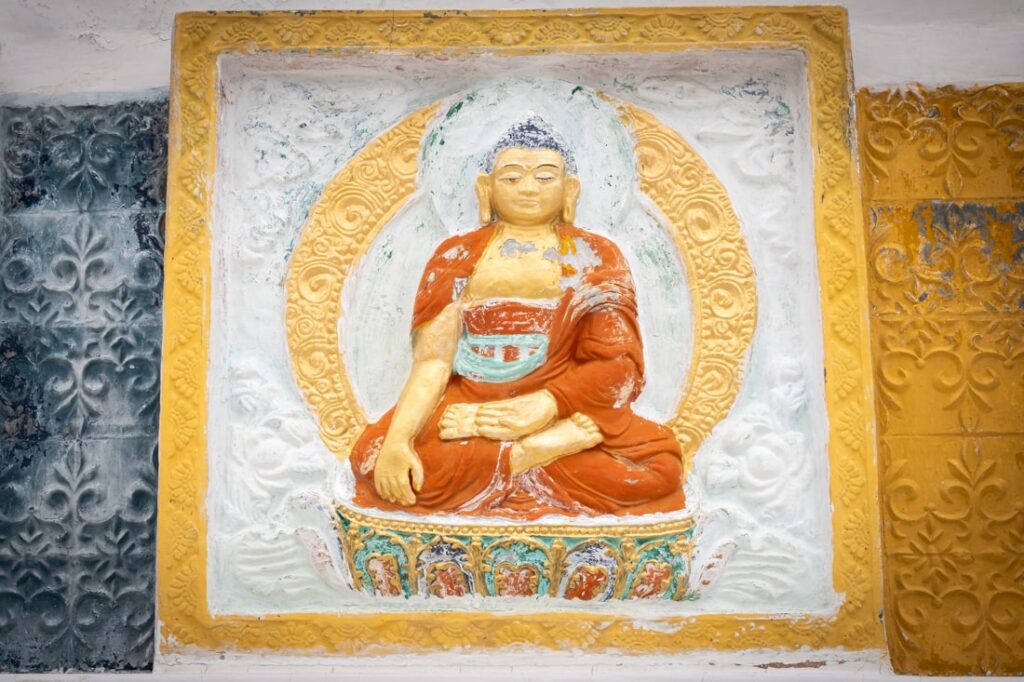
The local temples – When wandering around in Leh, chances are high you’ll stumble upon small temples and Gompas (Tibetan monasteries). some well-known and others tucked away on side streets. Take a walk through the quieter parts of Leh and you’ll stumble upon little gems like Soma Gompa and the Jama Masjid. These building show thebeautiful blend of Buddhist and Islamic influences in this town.
The many different monasteries in Ladakh
As soon as you set of on your journey into Ladakh, you’ll notice that monasteries (or Gompas, as they’re known locally) start to pop up on hilltops and cliffs. It’s almost impossible to miss them. Ladakh is often called ‘Little Tibet’. Because not only does the region shares its dramatic landscapes with Tibet, but also its rich Buddhist heritage. That’s why Ladakh is full with monasteries, prayer flags, and stupas. During our tour in Ladakh we saw many monasteries, but to be honest, we were never bored. They all have their uniqueness and differences. Below, we give you an overview of the monasteries we liked the most during our time in Ladakh.
Spituk monastery – As this monastery lies only 8 km from Leh, this is probably the first monastery you will visit. Spituk Monastery sits dramatically atop a hill, giving you a pleasant view over the airport and the surrounding landscape. The hall that intrigued us the most was the butter lamp house. Butter lamps play an important role in Buddhism as the lamp is said to help to focus the mind and aid meditation. Entry fee to Spituk monastery is 20 INR per person.
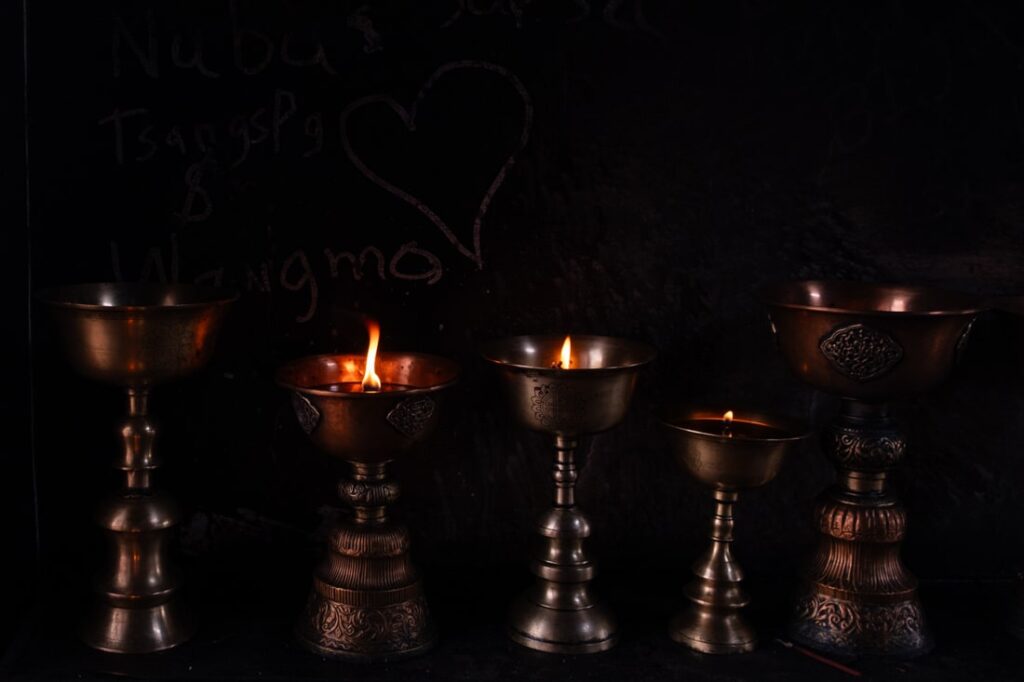
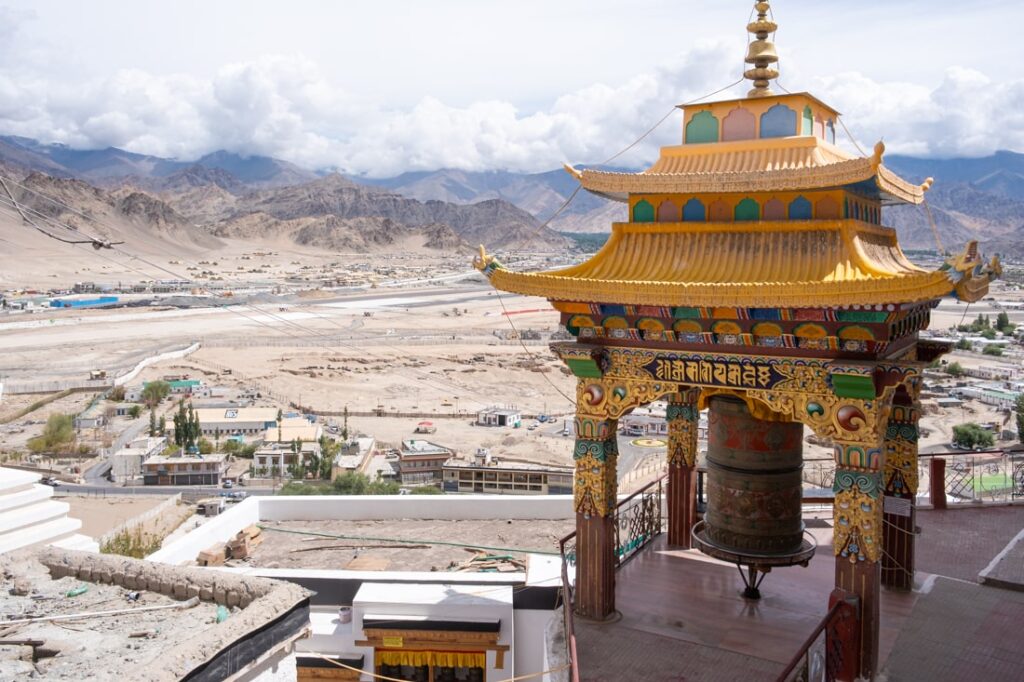
Lamayuru monastery – This monastery is often called the “Moonland Monastery” because of its surroundings. The landscape here is unlike anything else you’ll see in Ladakh. The monastery itself lies on a cliff and is surrounded by eroded rock formations that look like a lunar landscape. Lamayuru is one of the oldest and largest monasteries in Ladakh, founded in the 10th century. Entrance fee to Lamayuru monastery is 50 INR per person.
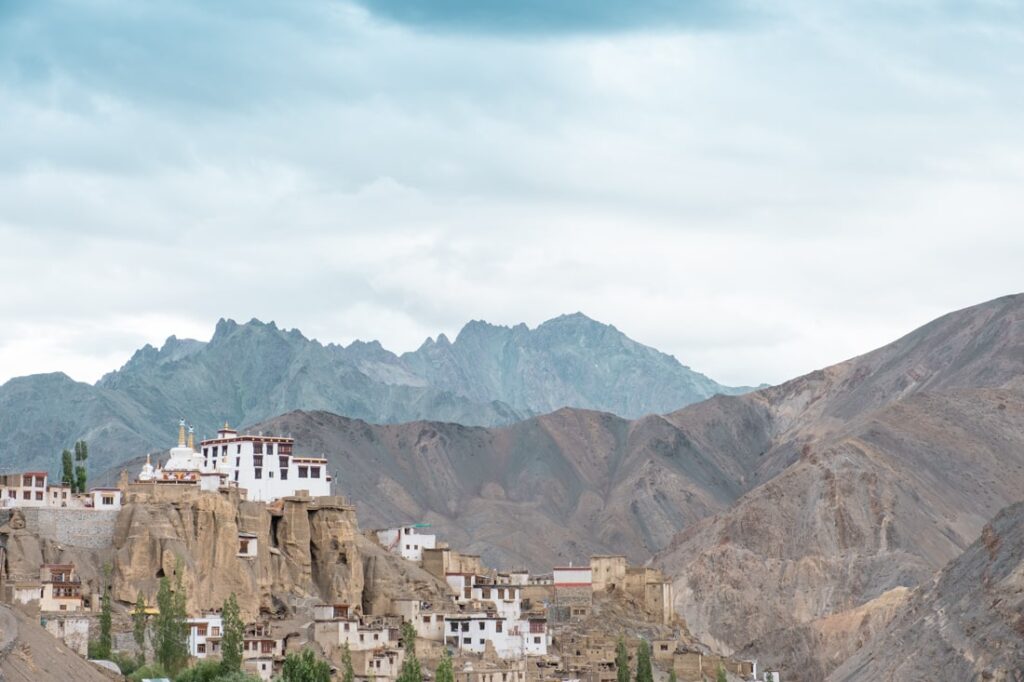
Alchi Choskor monastery – Alchi Monastery really surprised us, as it is completely different from the other monasteries in Ladakh. It felt more like a small village instead of the typical monastery perched upon a hill. The monastery was founded in the 11th century and has some remarkable Buddhist art. The prayer halls and temples were definitely amongst the most beautiful ones we have seen in Ladakh, with stunning murals and wood carvings. Photography is not allowed inside the monastery to protect the ancient murals. At the entrance, there are safe boxes were you can keep your valuable belongings before entering the monastery. Entrance fee to Alchi monastery is 50 INR for foreign tourists.
If you happen to be in Alchi during lunchtime, we highly recommend to have lunch in Alchi kitchen. This restaurant is run by women only and they serve delicious and affordable food.
Likir monastery – Likir Monastery may not be as famous as some of Ladakh’s other gompas, but that is part of its charm. It was built in the 11th century and one of the main reasons to visit this monastery is the iconic 23-meter-high statue of Maitreya Buddha, which was built in recent years and stands outside the monastery. The monastery also houses a treasure trove of ancient thangkas, Tibetan manuscripts, and religious artifacts. The prayer halls are filled with beautiful murals and statues of various deities.
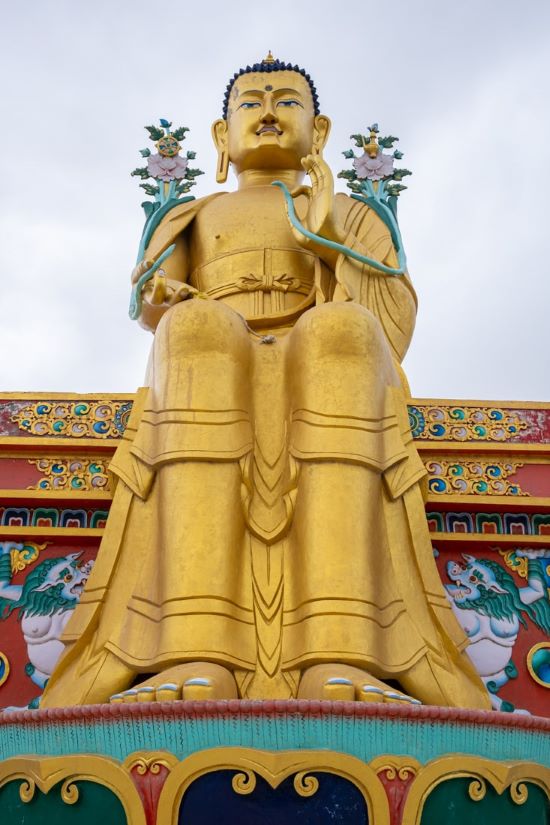
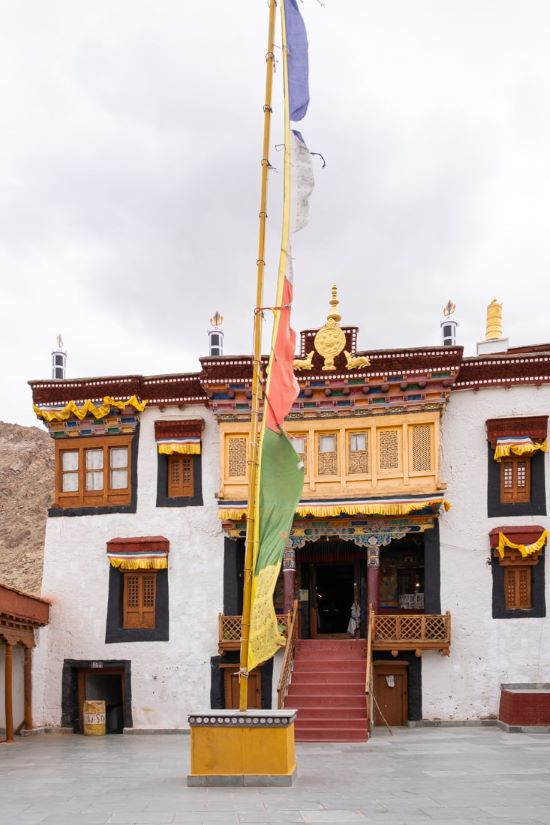
Diskit monastery – This monastery is the oldest and largest monastery in Nubra Valley and is mostly famous for its 32-meter-high Maitreya Buddha statue, which serenely overlooks the valley. The monastery was founded in the 14th century. Inside the monastery, you’ll find a prayer hall filled with ancient murals and statues. The entrance fee to the monastery is 30 INR per person.
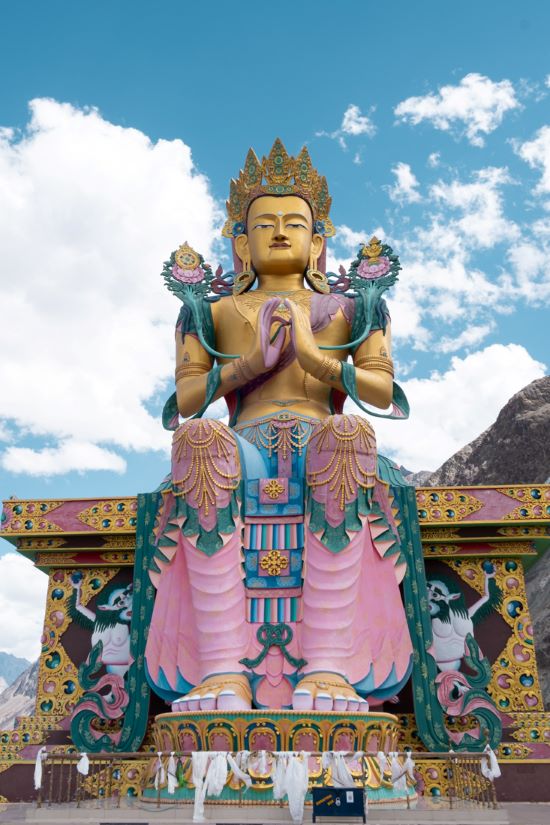
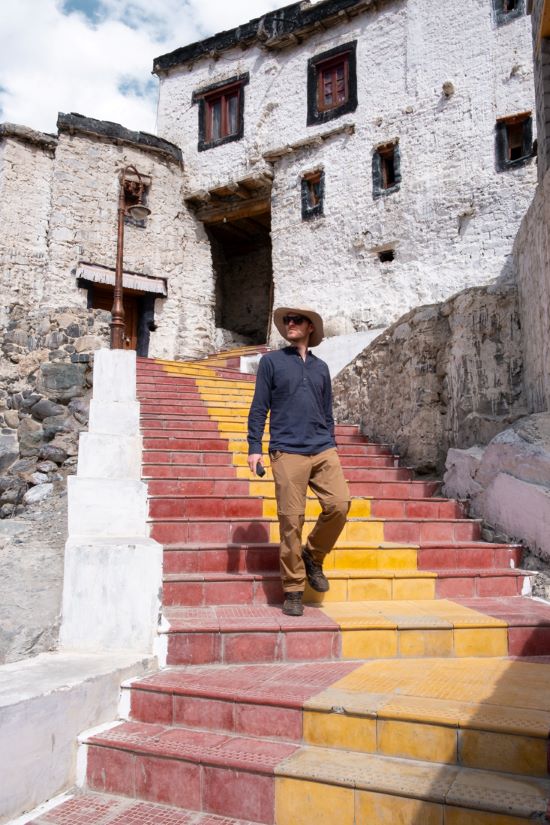
Thiksey monastery – Thiksey monastery is often called the mini Potala Palace, because it looks like a smaller version of the Potala Palace in Lhasa, Tibet. This monastery was definitely amongst our favorites monasteries in Ladakh, with its whitewashed walls and cascading structure. A big surprise here was the 15-meter tall statue of Maitreya Buddha (the future Buddha) that dominates the main prayer hall. Seeing this colorful, serene figure is something we won’t forget. The entrance fee to the monastery is 30 INR per person.
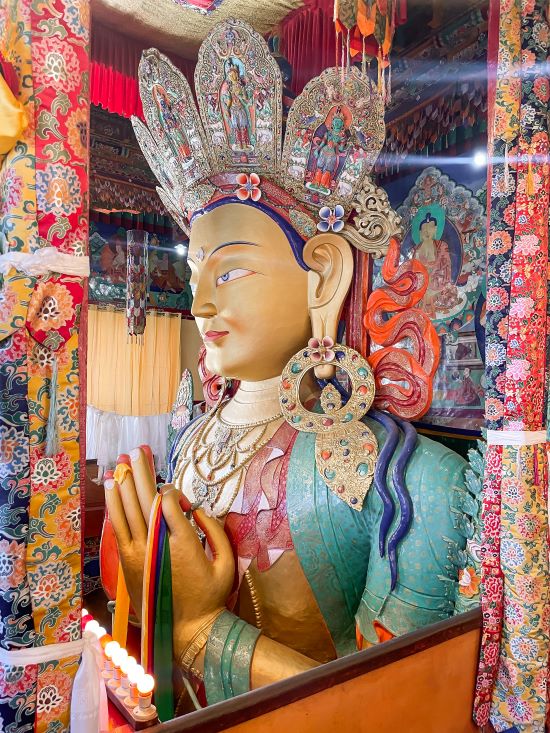
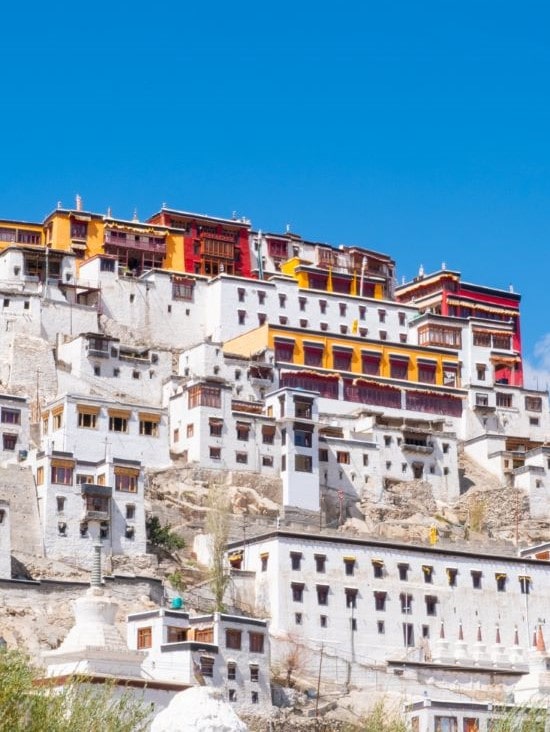
Hemis monastery – This monastery is the largest and richest in Ladakh and is a must-see. The monastery was built in the 17th century and it is the home of the most famous festival in Ladakh, Hemis Tsechu. The festival is celebrated with masked dances and colorful rituals in honor of Guru Padmasambhava (who is believed to have introduced Buddhism to Tibet). Make sure to visit the museum inside the monastery as it is a showcase of ancient artifacts, thangkas (Buddhist paintings on cotton or silk) and rare statues. Entrance fee to the Hemis monastery is 50 INR.
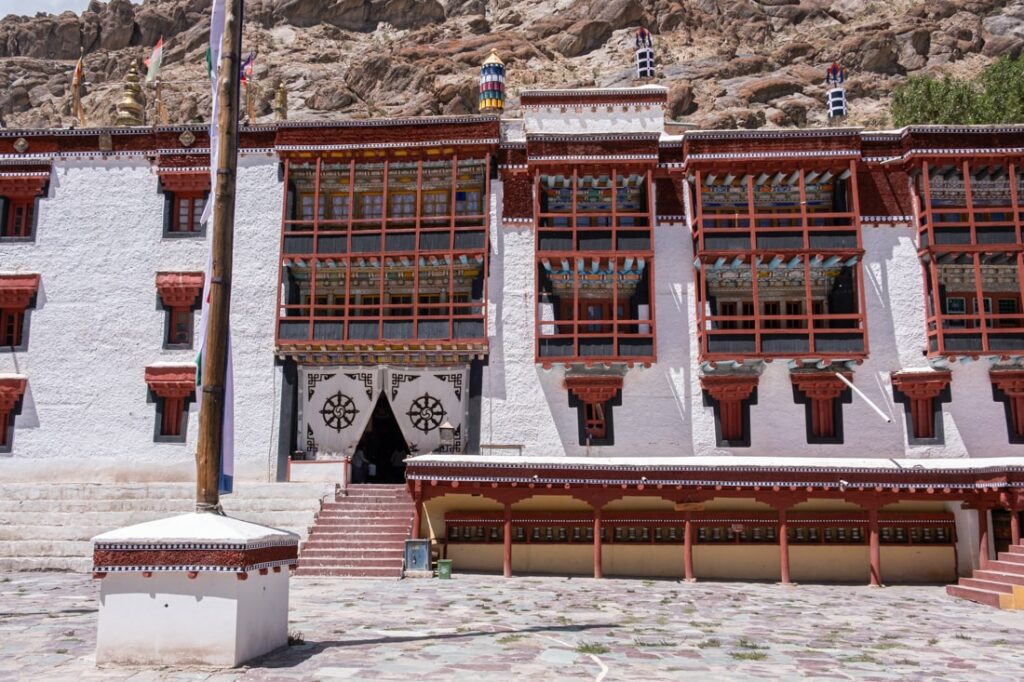
The high altitude passes
Ladakh’s high-altitude passes are some of the most awe-inspiring experiences for anyone visiting the region. These mountain passes, often sitting above 5.000 meters (16.404 feet), are the gateways to the different remote valleys in Ladakh. They are often the only routes connecting valleys and villages, which makes them really important for this region. The passes in Ladakh belong to some of the highest motorable roads in the world. During our trip through Ladakh, we did two high-altitude passes: Khardung La Pass and Chang La Pass.
Khardung La Pass – This pass is the gateway to Nubra Valley and the top lies at 5.359 meters (17,582 feet) above sea level. This pass is definitely the most famous pass, and this is clearly visible at the top, as there are plenty of tourists and food stalls. The pass was originally used by caravans on the Silk Route, making it a historically significant route.
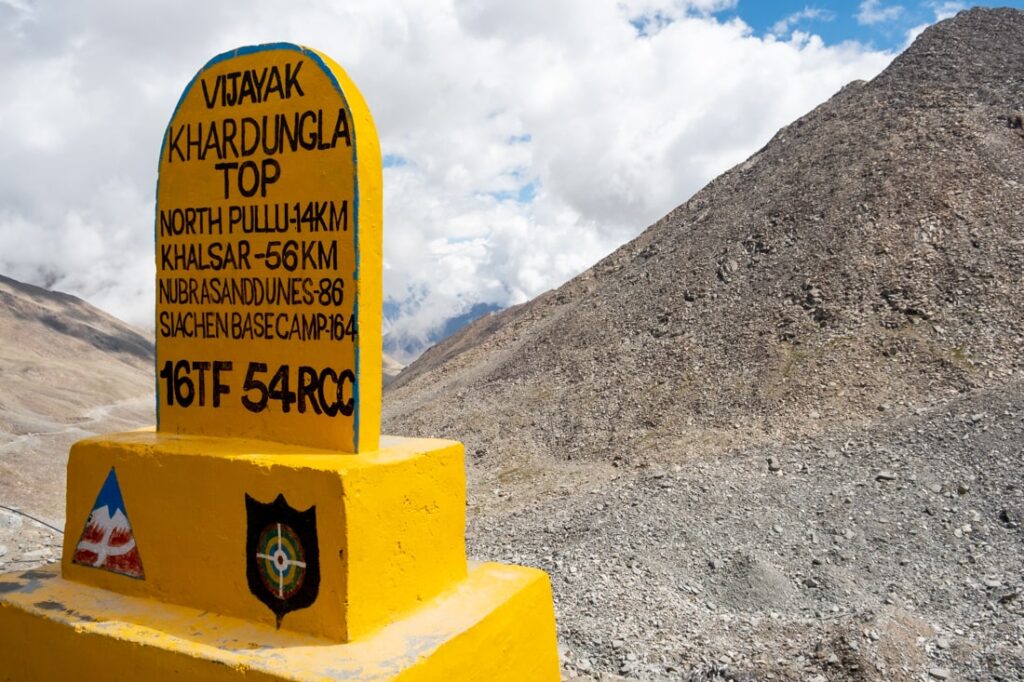
Chang La Pass – This pass is the gateway to Pangong Lake. Pangong lake was for us definitely the highlight of our trip to Ladakh. The top of Chang La Pass lies at 5.360 meters (17,590 feet) above sea level and it is the third-highest motorable road in the world. The pass is named after Changla Baba, a saint who is believed to protect travelers passing through this challenging route.
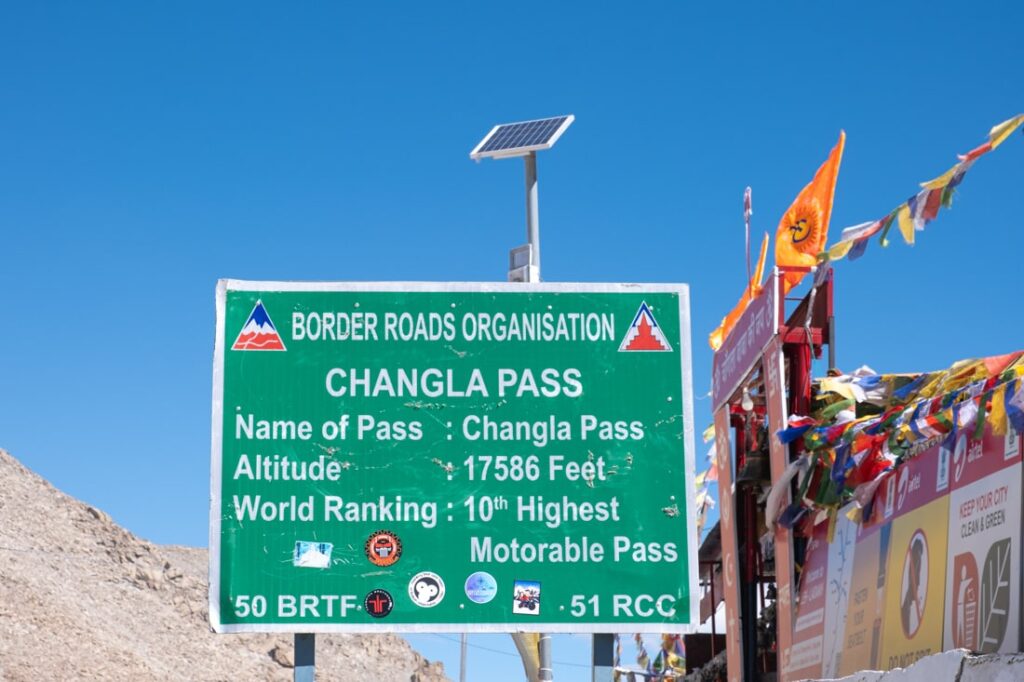
The natural highlights
Ladakh is also home to diverse natural highlights. Below, you can find some of the highlights, but just to be clear: A tour in Ladakh takes you the entire way through stunning landscapes. So a visit to Ladakh is a showcase of nature all the time!
Sangam Viewpoint – This is the place where the Indus and Zanskar rivers meet. Normally, these two rivers have distinct colors. However, when we visited, the rivers were swollen and full of mud, so we couldn’t really distinguish the colors very well. During less rainy weather, the Indus River has a turquoise colors and the Zanskar River is more muddy. During the summer months you can even enjoy white-water rafting along the river, with Sangam viewpoint as the starting point.
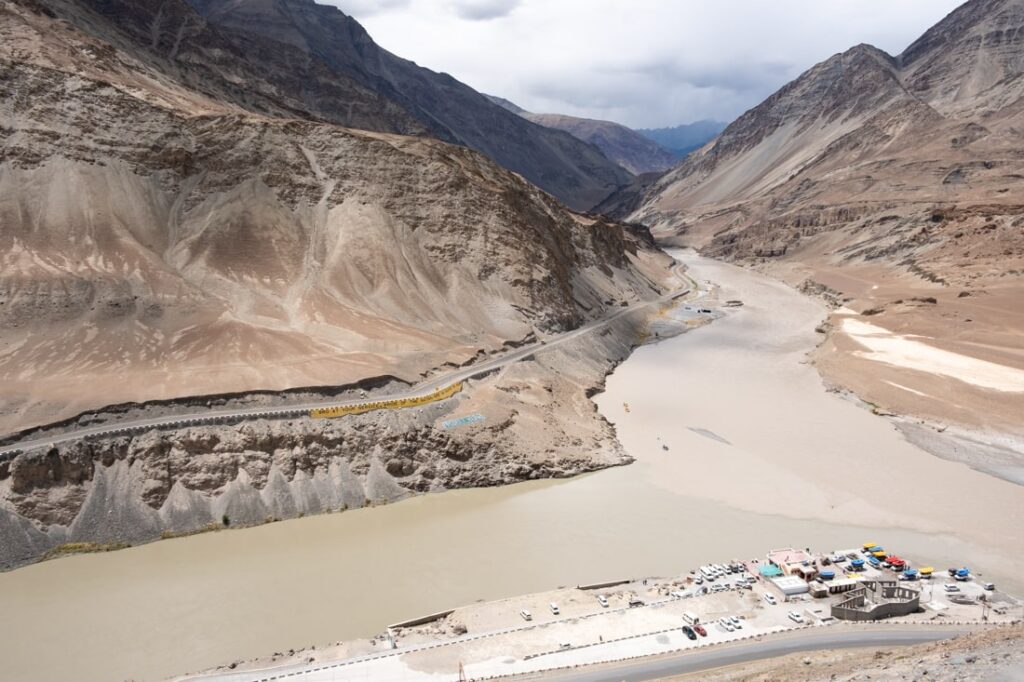
Hunder Sand Dunes – Never did we expect to find a desert in the mountains. But we did at Hunder. Rolling sand dunes, in the middle of a rocky, mountainous terrain. Hunder is also famous for its Bactrian camels, descendants of the animals used in ancient times on the Silk Route. We didn’t opt for it, but if you are into it, you can enjoy a camel safari across the dunes. The best time to visit is in the late afternoon or early evening, when the soft light of the setting sun gives the dunes a golden glow.
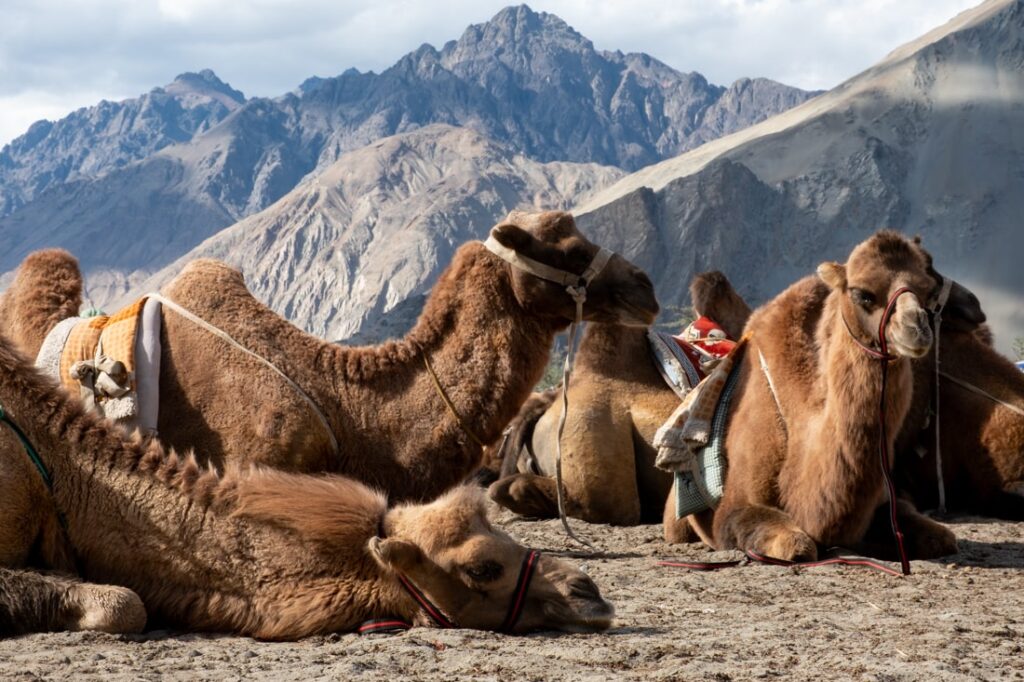
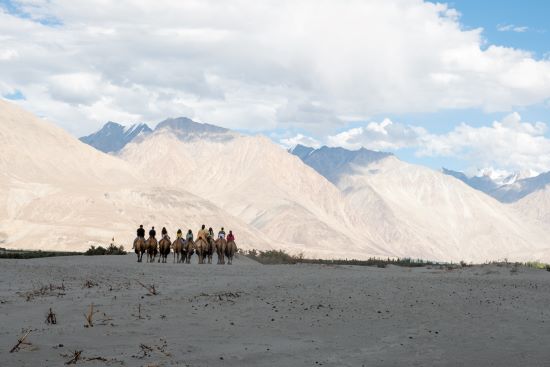
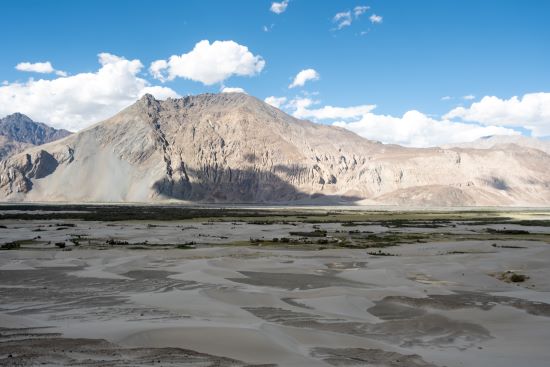
The moonland in Lamayuru – We already mentioned Lamayuru when giving an overview of the must-see monasteries in Ladakh. But Lamayuru isn’t just about the monastery. It also is the place where you can see the moonland of Ladakh: a stretch of terrain resembling the surface of the moon, with strange, eroded rock formations and golden-brown colors.
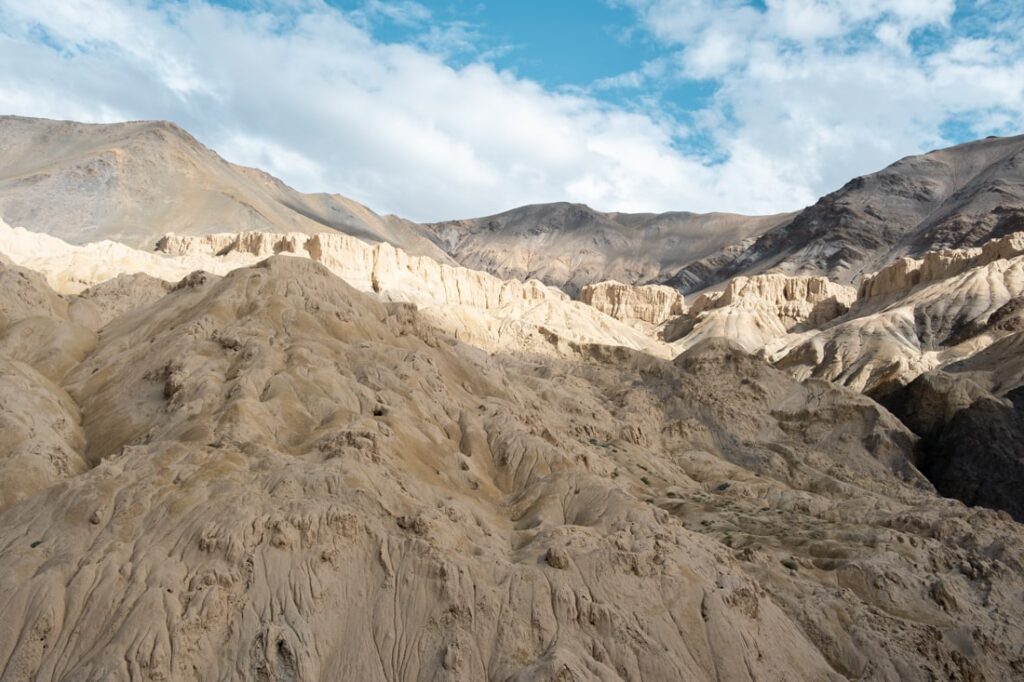
Pangong Lake – Pangong lake was for us the highlight of our trip! Located on the border between India and China, this high-altitude lake sits at an elevation of 4.350 meters (14.272 feet) above sea level and stretches over 130 km. What makes the lake so special is its different shades of blue, ranging from deep sapphire to turquoise, depending on the time of day and weather.
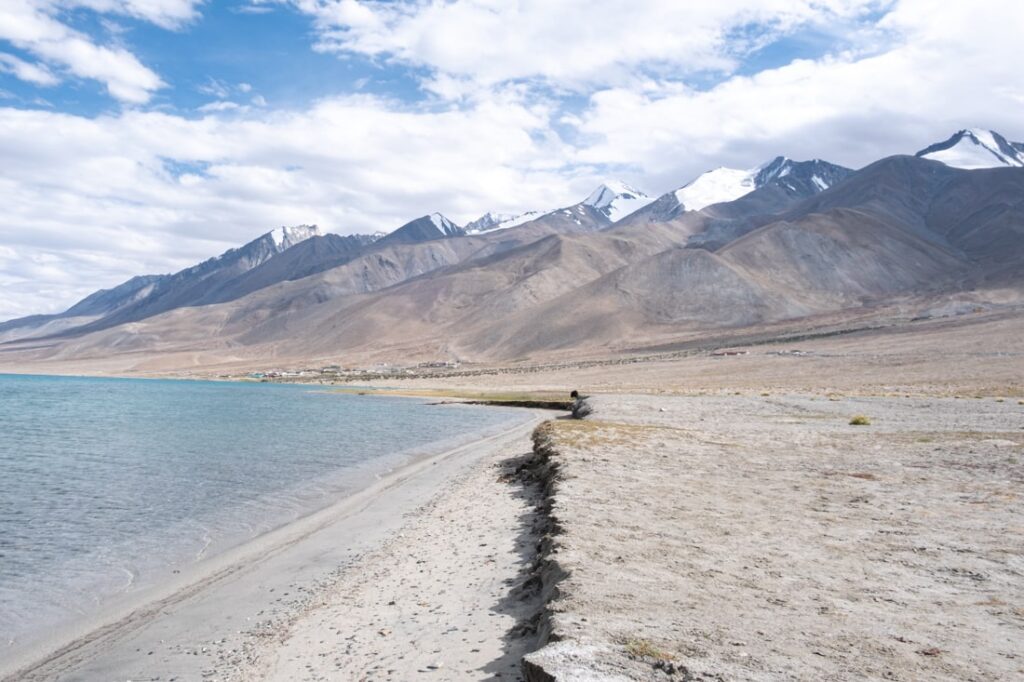
How to prevent high-altitude sickness?
While Ladakh’s natural beauty is breathtaking in more ways than one, its high altitudes can also leave you feeling a bit breathless, literally! Ladakh is a high-altitude region and the risk of high altitude sickness (also called acute mountain sickness, or AMS) is real. Not everyone is equally affected, and there are plenty of ways to prevent and manage AMS. Some people adapt to the altitude quickly, while others might suffer a bit more. The most important thing is to listen to your body and take precautions. Below you can find some prevention measures we took and we were lucky not to experience any symptoms of high-altitude sickness when we were in Ladakh.
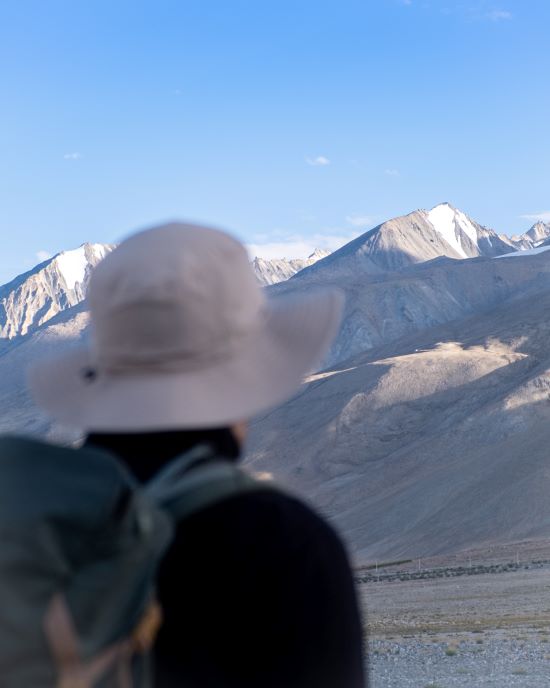
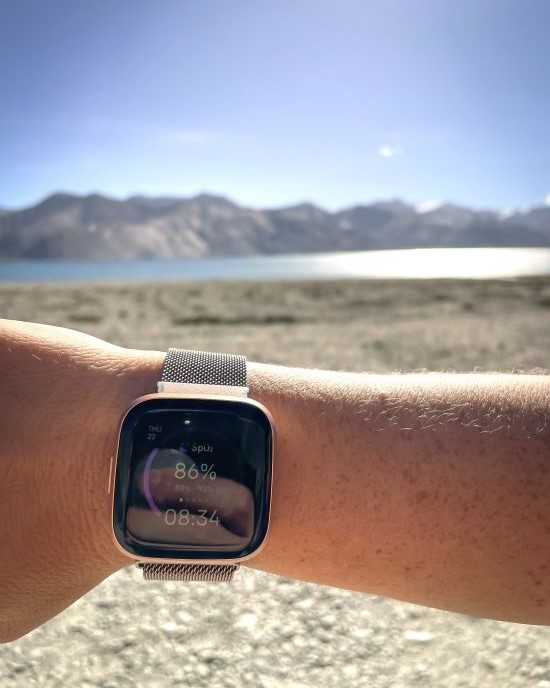
Acclimatize Slowly – This is definitely one of themost important things you can do. Allow your body to acclimatize to the altitude gradually. We did this by choosing a tour that allowed us to spend a couple of nights on lower altitudes (like Leh and Nubra Valley) before visiting the higher-altitude regions. If you want to play it safe, we would suggest to stay a couple of days in Leh before starting your tour.
Looking for accommodation in Leh?
Stay Hydrated – Dehydration can worsen the symptoms of altitude sickness, so make sure you’re drinking plenty of water throughout the day. This is particularly important in Ladakh, as this region is a high-altitude desert with dry air. During our time, we did drink coffee as we read that not drinking coffee as a regular coffee drinker might evoke symptoms similar to high-altitude sickness.
Prioritize sleep – A good night sleep is also a great prevention measurement against high-altitude sickness. It will help your body recovering, Aim to have at least 8 hours sleep a day, especially in the first days you arrive in Ladakh.
Avoid too many physical activities – Take it easy for the first few days. Walking around in Leh is the best way to gently acclimatize. Avoid strenuous activities, like hiking, until you’ve had time to acclimatize.
Eat healthy meals – Try to eat healthy during your time in Ladakh. We experienced the food on our tour was always healthy (and delicious).
Help your body adjust with medication – We took Diamox (acetazolamide) tablets the first two days we were in Ladakh. We do recommend always to consult with a doctor before taking medication.
What to take with you when traveling to Ladakh?
When we traveled to Ladakh, we packed smart to stay comfortable and prepared for the region’s unique terrain, climate, and high altitudes. Because of its roughness and remoteness, the right gear can make all the difference. So below, you can find some advice on what to pack for Ladakh.
The weather in Ladakh can change dramatically, with temperatures ranging from warm sunshine during the day to cold nights.
- It is important to pack layers of clothing.
- Most of the time we didn’t need them, but at Pangong Lake we were happy to have our gloves and hat with us. It made watching the stars and the sunrise far more comfortable.
- Dependent on the type of tour you’ll do, but expect on each tour a fair amount of dust. A scarf or buff is great for protection.
- Thermal socks are essential for cold nights. Wool or synthetic materials are best for keeping your feet warm and dry.
Ladakh’s high altitude means thinner air, so the sun is much stronger than at sea level. You’ll definitely need some key accessories to protect yourself:
- High-quality sunglasses with UV protection are essential to protect your eyes from the bright sun. And it will make gazing at the stunning landscapes way more comofrtable.
- Sunscreen (SPF 50+) will help you protect against the strong UV rays
- A must-have is lip balm and moisturizer: The dry air can take a toll on your skin and lips.
In Ladakh’s remote and high-altitude regions, it’s important to have the right gear for both comfort and safety:
- Bring a portable charger/power bank: Some areas may not have reliable electricity, so bringing a portable charger will guarantee that your devices are powered up.
- Headlamp: Perfect for evening walks, camping, or dealing with power outages.
- Binoculars are a must if you’re a nature lover or birdwatcher. Make sure to have a stop at the marmots that live near Pangong Tso.
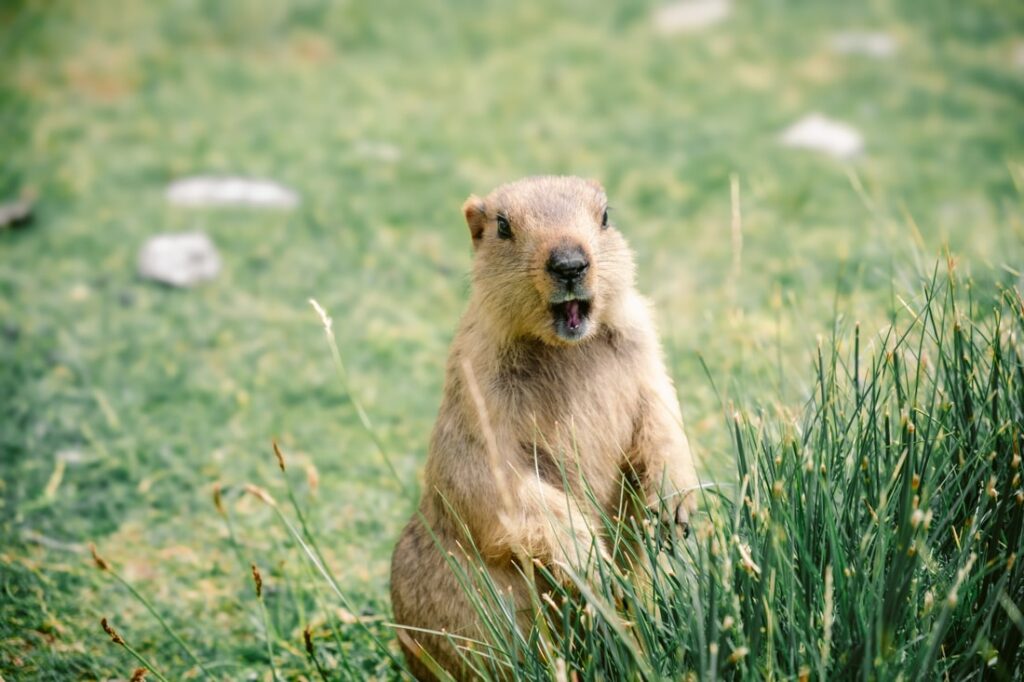
Ladakh can be dusty, dry, and remote. The hygienic standards in the hotels is good, but along the way, you might have to visit less hygienic bathrooms. Pack the following to stay clean and comfortable:
- wet wipes and hand sanitizer are lifesavers for staying fresh when access to running water is limited.
- Public restrooms may not always have toilet paper, especially in more remote areas. So best to bring your own toilet paper.
Is traveling to Ladakh safe?
When we traveled to Ladakh, we always felt safe. But like any remote region, careful preparation and awareness of a few factors will help you to ensure a smooth trip. So keep the following things in mind as a foreigner:
Geopolitical situation
Ladakh is situated in the Jammu-Kashmir region, a region with a unsafe reputation. It is true that Ladah is situated in a sensitive area near the borders of China (Tibet) and Pakistan, which means there can be occasional political or military tension. However, most tourist areas like Leh, Nubra Valley, Pangong Lake, and Tso Moriri are far from any conflict zones and are safe for tourists. Especially if you are traveling in a tour, you shoudn’t worry too much about this. Also, the Indian government takes special care to ensure that tourist areas are secure, and the presence of military personnel is common but not intrusive.
Keep in mind that foreigners need Inner Line Permits (ILPs) to visit certain regions (such as Pangong Lake, Nubra Valley, Tso Moriri), but these are easily obtainable in Leh. Also, most tour companies can make these arrangements for you. Make sure you always carry your passport, permits, and identification while traveling in Ladakh.
High altitude and health safety
Ladakh is a high-altitude region, and one of the main risks for travelers is altitude sickness. The lower oxygen levels at these altitudes can lead to acute mountain sickness (AMS). To stay safe, we recommend you to read carefully our recommendations on how to prevent high-altitude sickness (see above). There are hospitals and clinics in Leh that are equipped to handle altitude sickness and other health emergencies. In more remote areas, medical facilities can be limited.
Road infrastructure
While the condition of the road infrastructure has improved over the past years, Ladakh is still quite remote. Roads in Ladakh can be rough, narrow, and sometimes dangerous due to landslides or poor maintenance. Especially during the monsoon season this is a real danger.
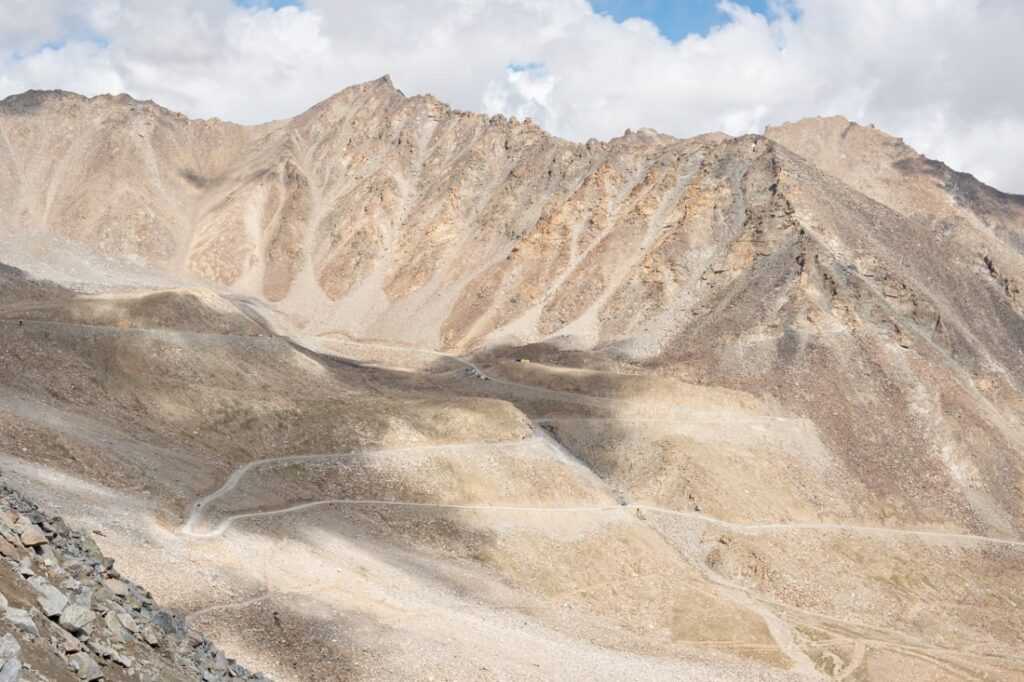
Solo Female Travelers
Overall, Ladakh is safe for solo female travelers. The local culture is welcoming, and incidents of harassment or crime are rare. However, as a general rule, always take standard travel precautions like preventing to walk alone in isolated areas after dark, dressing modestly and trusting your instincts.
Food and Water Safety
Before we traveled to India, we were really worried about getting food poisoned. But during our time in India, we always ate delicious and never got the famous ‘Delhi Belly’. Below, the rules we followed to prevent food poisoning:
- Drink only bottled or filtered water. We even brushed our teeth with bottled water
- Stick to freshly cooked food in reputable restaurants
- Try to avoid meat
- If it is not boiled, cooked or peeled, don’t eat it
- Always use hand sanitizer before your meal
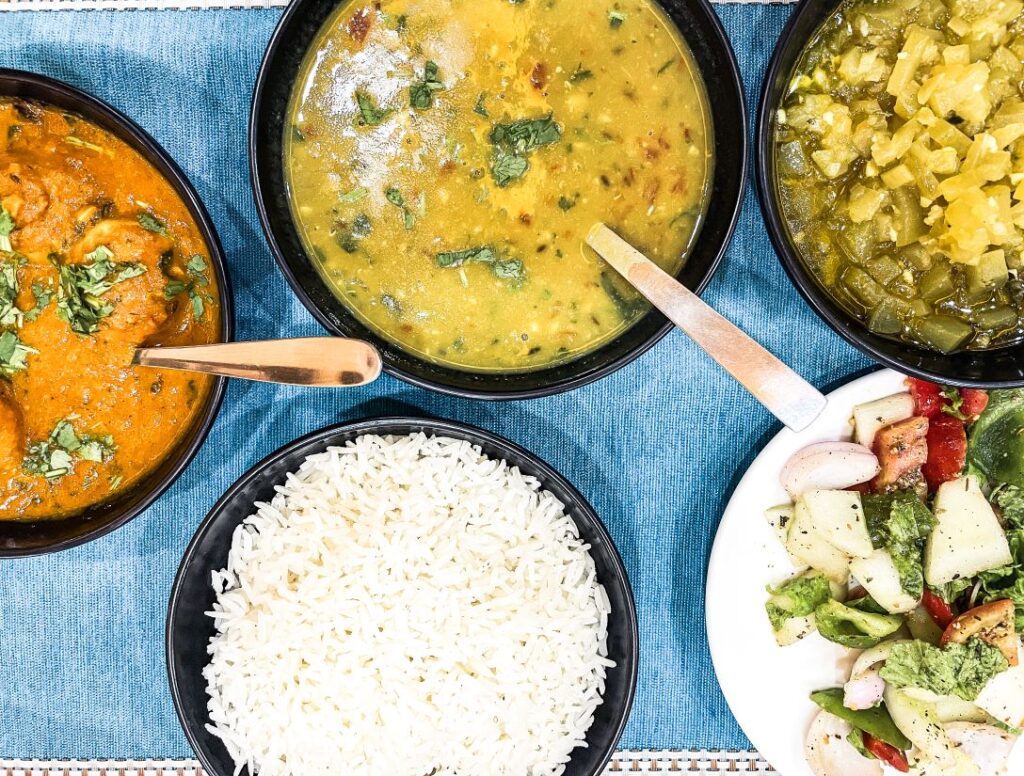
That’s it! Now you are ready to travel to Ladakh yourself. If you have any questions, comments or recommendations, get in touch with us via our social media channels.
Happy travels!
Matthias and Mieke